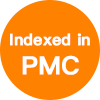fig3

Figure 3. Schematic representation of the main mechanism of resistance to CELMoD therapy. Mutations of cereblon or one of the other components of the CUL4ACRBN E3 ubiquitin ligase are the main mechanisms of resistance to CELMoDs. Additionally, mutations and alterations in downstream proteins of the CRBN pathway also reduce the efficacy of CELMoDs. Altered fatty acid metabolism and epigenetic regulation increase resistance to CELMoDs. An immunosuppressive microenvironment has been linked to reduced PFS in patients receiving IMiDs and CELMoDs. For detailed explanations of mechanisms of resistance to CELMoDs, see the main text. CELMoD: Cereblon E3 ligase modulatory drug; CUL4A: Cullin 4; CRBN: cereblon; PFS: progression-free survival; IMiDs: immunomodulatory drugs; DDB1: DNA damage-binding protein 1, ROC1: ring box 1; IRF4: interferon regulatory factor 4.












